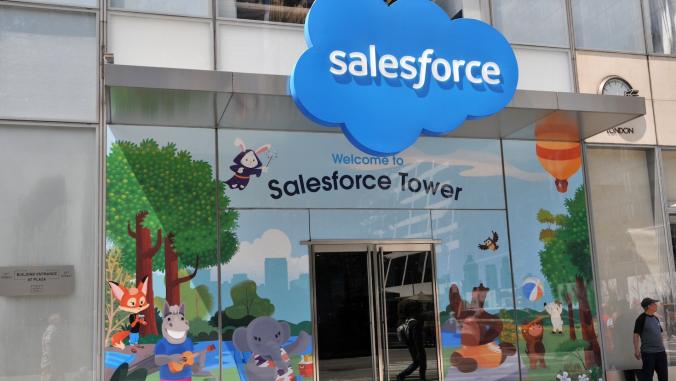Companies are getting creative about clean energy
Sourcing solar, wind and other renewables is complicated. Here are three insights from GM, Home Depot and others in the trenches.

Despite uncertainty surrounding the future of the Clean Power Plan and contractual nuances that make even the smallest project feel unnecessarily complex, big businesses seem more committed to renewable energy than ever.
“This time it’s not about fashion, it’s about real economics, about real business opportunity,” said economist Mark Kenber, CEO of the Climate Group, during a keynote interview at last week’s GreenBiz 16 conference in Scottsdale, Arizona.
Climate Group is one the organizations driving the RE100 initiative, which encourages organizations to use renewable generation sources for all of their energy needs. At last count, 56 companies had signed up, including new-ish supporters BMW and Coca-Cola. “I think that very few of the RE100 companies are making their investment contingent on policy. … They’re making investment decisions based on what they see over the short, medium and long term.”
Every month heralds new tales of one-upmanship and ingenuity. In mid-February, for example, Intel switched on a solar carport at its Folsom, California, campus capable of accommodating almost 3,000 cars, motorcycles and other vehicles. At peak production, the installation can cover about half of the campus’ electricity needs. Put another way, the chipmaker’s total on-site generation capacity is now about 8.7 megawatts, among the top 10 in the United States.
Intel is the perennial leader of the Environmental Protection Agency’s Green Power Partnership list. The chipmaker “buys” enough clean energy courtesy of various on-site projects, utility contracts, and renewable energy credit (REC) purchases to cover 100 percent of its annual demand. Ironically, Intel isn’t even part of the RE100 pledge. At least not yet.
So, there’s a will. What’s the way? In 2015, more than 20 companies disclosed big renewable energy contract, with Google leading the charge. But 15 of the organizations who announced deals last year were first-time buyers. Numerous experts with in-the-trenches, practical experience in procuring clean energy shared their insights in GreenBiz workshops. Here are three takeaways:
Diversification is a must
You’d be hard-pressed to find an electric utility that relies on just one generating technology. Likewise, most companies committed to buying from renewables sources boast portfolios that include a mix of solar, wind, fuel cells, and even waste-to-energy technologies.
Consider the example of General Motors, which has committed to buying 125 megawatts of clean power by 2020. While GM is investing heavily in solar electricity — it has spent more than $10 million since 2014 — the automotive company is also a pioneer in co-generation facilities fueled by landfill gas.
GM’s Fort Wayne assembly plant, for example, is one of three plants that use generators powered by methane captured from a nearby landfill. In Fort Wayne, the technology produces 53 million kilowatt hours of power annually.
The return on investment related to these facilities amounts to approximately $6 million annually, said Rob Threlkeld, GM’s manager of renewable energy. “These are not quick twitch decisions,” he said. “These are creative projects that align with what makes sense for the factory or facility involved.”
Why Home Depot didn’t opt for rooftop solar first
Retailers IKEA and Walmart have invested substantially in solar panel installations on store and distribution center roofs. So why has Home Depot been relatively quiet about its own intentions, especially consider its commitment to selling homeowners on solar panels?
The very practical reason is that a large portion of the home improvements company’s buildings are aging. “As of 2012, we had 2,000 roofs, but very few of our buildings had roofs that would be there for the next 15 years,” noted Craig D’Arcy, director of energy management for the Home Depot.
It made sense to delay significant distributed solar projects until the buildings were updated, D’Arcy said. With that in mind, you can expect Home Depot to disclose more details about its rooftop solar strategy in the next 12 to 18 months, he said.
Incidentally, don’t expect Home Depot to declare all those projects at the same time. It’s a good idea to stagger when power purchase agreements expire, so your company’s operation teams doesn’t have to renegotiate all of its contracts at the same time, D’Arcy said.
Utilities are coming around
Historically speaking, one of the biggest challenges corporate renewable buyers have faced is the unwillingness of utility companies to take their interest all that seriously. Another reality: many utilities simply aren’t producing enough energy from renewables to support demand from the business world.
That frustration was behind the creation two years ago of the Renewable Energy Buyers’ Principles, a manifesto detailing the business case driving corporate interest in clean energy.
Marty Spitzer, director of U.S. climate and renewable energy policy for the World Wildlife Fund, suggests that investor-own utilities are becoming far more willing to listen. “We are at the infancy of collaboration conversations,” he said. “There are people who want to be creative.”
One example: Last November, Xcel Energy in Minnesota has proposed a new service that caters specifically to customers that want to buy 100 percent of their electricity from solar and wind generating sources. The program, called Renewable Connect, must be approved by the state’s utility commission. The proposed contracts are very flexible, offering month-to-month, five-year or 10-year terms.
Xcel’s Renewable Connect initiative is one of several “green tariff” programs emerging around the country. These tariffs allow companies to benefit more directly from renewable energy projects being developed near their facilities.
“Through green tariffs, traditional utilities may be able to offer renewable energy services as attractive as what buyers are able to access in competitive markets or through third party-financed 'behind-the-meter' renewable energy services,” notes the World Resources Institute in a recent white paper about the topic.
“Green tariffs may also prove to provide greater flexibility and lower transaction costs, given utilities’ expertise and decades of experience in integrating generation technologies, aggregating customer demand, and reliably delivering least-cost resources.”





